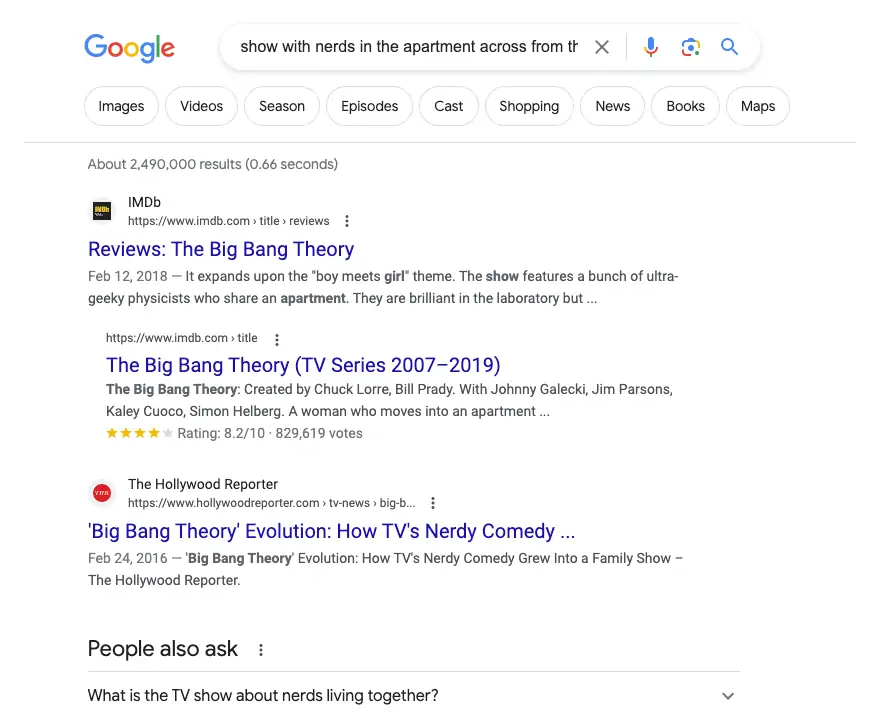SEO in 2019: How User Experience and Content Strategy Influence Search Rankings
Pretend, for a moment, that it’s 2008. George Bush is still president of the U.S., The Dark Knight is tearing up the box office, and an unknown Katy Perry is breaking into the mainstream with the single “I Kissed a Girl.”
Man, I feel old after writing that.
Also during this era, search optimization (SEO) was mostly about stuffing keywords and submitting for backlinks, along with some other fun “tricks” that one would work into a website to get better rankings in Google. You also still had to convince clients that going with a Flash-based website wasn’t a good idea.
Ah, the good ol’ days. But it’s 2018. Instead of Bush, The Dark Knight, and Katy Perry, we have Trump, The Avengers, and Drake. And while the SEO game, too, has changed drastically, I still hear folks talking about SEO as if we’re in 2008. Let’s discuss how things have changed lo these past 10 years, and how that should shape your search optimization strategy.
Search Engines Aren’t Just Counting Keywords
Remember when a big part of your search strategy was to have most of the text on your website read like this?
“We are Philadelphia’s top web design company. If you’re looking for web design in Philadelphia, boy howdy — you’ve come to the right place. Our Philadelphia-based team of Philadelphia web designers is just tip-top. Did you know Benjamin Franklin lived in Philadelphia? If he were around today, still wandering these Philadelphia streets, he’d recommend us as the best web design service in Philadelphia! Because Philadelphia is great especially for Philadelphia-based web designers.”
Hopefully that will feel nostalgic for most of you, a remnant of a time long past (or are you still doing this?). SEO copywriting was a dark art: writing semi-readable content while stuffing as many keywords as possible into each paragraph. And it worked, because keyword frequency was a major ranking signal. Keywords still play a part in an SEO strategy, but it’s important to recognize that Google is much, much smarter than it used to be. Whether it actually counts as artificial intelligence or not is debatable, but for the purposes of SEO, it’s probably best to think of it as one.
Assume that Google can understand your content and website at some level, similar to how a human can.
Concepts, Not Keywords
Google’s engine is capable of interpreting language, and it has access to pretty much all of the information there is. As a result, it can correlate information, and it can understand content irrespective of the actual embedded keywords. Let me give you an example:
Let’s search for “show with nerds in the apartment across from the girl”

Note that I got the best result for this query: the IMDB page for The Big Bang Theory. This page probably doesn’t match my actual keywords as well as some other pages might, but Google “knew what I was getting at.” Notice, also, that the word “geeks” is bolded in the result teaser, even though I used “nerds” in my query. The engine knows that those two words are often synonymous, so it accounts for either word when completing my search request.
What does this mean for your SEO strategy? It means that simply blitzing your pages with keywords in order to get your “count” up isn’t going to work the way it used to. Google’s too smart for that, so you need to implement a more complete strategy.
User Satisfaction as a Ranking Signal
Speaking with one of our SEO partners the other day, I mentioned that as we (Eastern Standard) continue to build our UX and content strategy practices, we’ve begun to overtly trespass on the domain of SEO.
The reason for this is that user satisfaction — both in terms of the experience and quality of content — has become a major ranking signal for Google. The better the user experience, and the degree to which the content is aligned with the needs of the end user, the more likely you are to find strong positioning in search results.
I would make the case that if you keep user satisfaction in mind as your primary concern, you will inherently account for other ranking signals that we know Google is using.

There are many ways to strategize around user satisfaction, the details of which are outside the scope of this article, but I’ll discuss some fundamentals below to get you started.
In its simplest form, you should stop thinking about optimizing pages and start thinking about how to optimize the end-to-end experience from search to conversion.
Content Alignment
Let’s pause on that last note for a moment, because content alignment is probably the most important part of a modern search optimization strategy. Content alignment means: how effectively do the content and the assets I’m providing to the user actually fulfill the need that sent them to the site in the first place?
For example, if I’m searching for “Top Songs of 2018,” which I did while writing the intro above (because I’m completely detached from what the kids are doing these days), a table of the most streamed songs for the year so far is perfect. That’s exactly what’s provided here, which is where I ended my search.
This content was perfectly aligned with my needs and expectations, so my satisfaction level was as high as it gets. This is what you want to consider when producing your content. A few quick notes before I move on from this point:
- Exactly how Google is measuring user experience and user satisfaction is the subject of much debate, but you should operate as if Google is watching every user as they move through your website, and grading the quality of their experience.
- On the topic of user experience, consider the following question: Would a long, drawn-out article or a slideshow have been as useful for me? No. I wanted quick answers, so the table format was perfect. The way you present your content assets makes a big difference.
- Be careful when interpreting bounce rate. I got exactly what I wanted from that site, but technically I “bounced.”
Aligning for the User Journey
The example I posted above is about as simple a user journey as there can be: I was essentially looking for the answer to an empirical question. Most likely, your user journey will be more complicated, so you need to align your content to the user’s needs at each step of the journey. We typically think of four stages of the user journey:
Introductory content — This is where the user learns the most basic information about the organization or product.
Interest/research content — The user is digging a bit deeper, perhaps evaluating your organization or product against others.
Intent content — The user is moving towards a decision; they might be looking at pricing, details of the application process (e.g., in the case of a university), or hours of operation for a retail location/attraction.
Conversion content — This is the final step in the journey, where the user is looking for the checkout button or the contact form.
Keeping the steps of this journey in mind and optimizing the experience by aligning content to the needs of users as they move through your site will go a long way towards updating your “aughties” search strategy for this decade and beyond.



